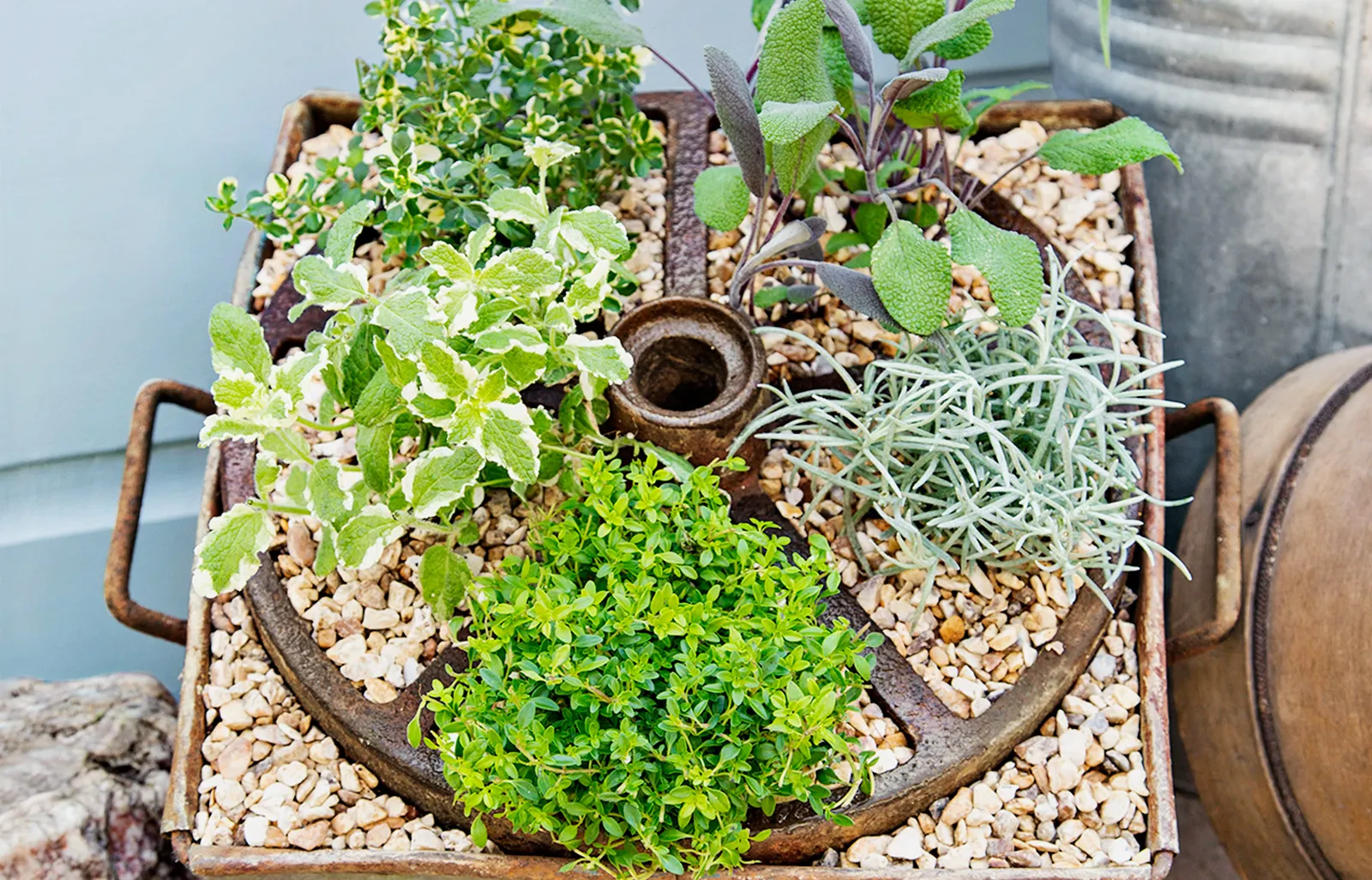Got an old wheelbarrow gathering dust in your shed? You can turn it into a charming garden centerpiece. This fun DIY project breathes new life into a classic tool that’s been around since ancient China, transforming it from a heavy-duty hauler into a beautiful home for your favorite plants. Whether you’re growing herbs, flowers, or succulents, a vintage wheelbarrow planter adds a touch of rustic elegance to your outdoor space. In this guide, we’ll walk you through the whole process, from prepping your wheelbarrow to picking the perfect plants, and help you create a unique and eye-catching display that’ll keep your garden looking great all season.
Steps for Making a Wheelbarrow Planter
Step 1: Drill Holes for Drainage
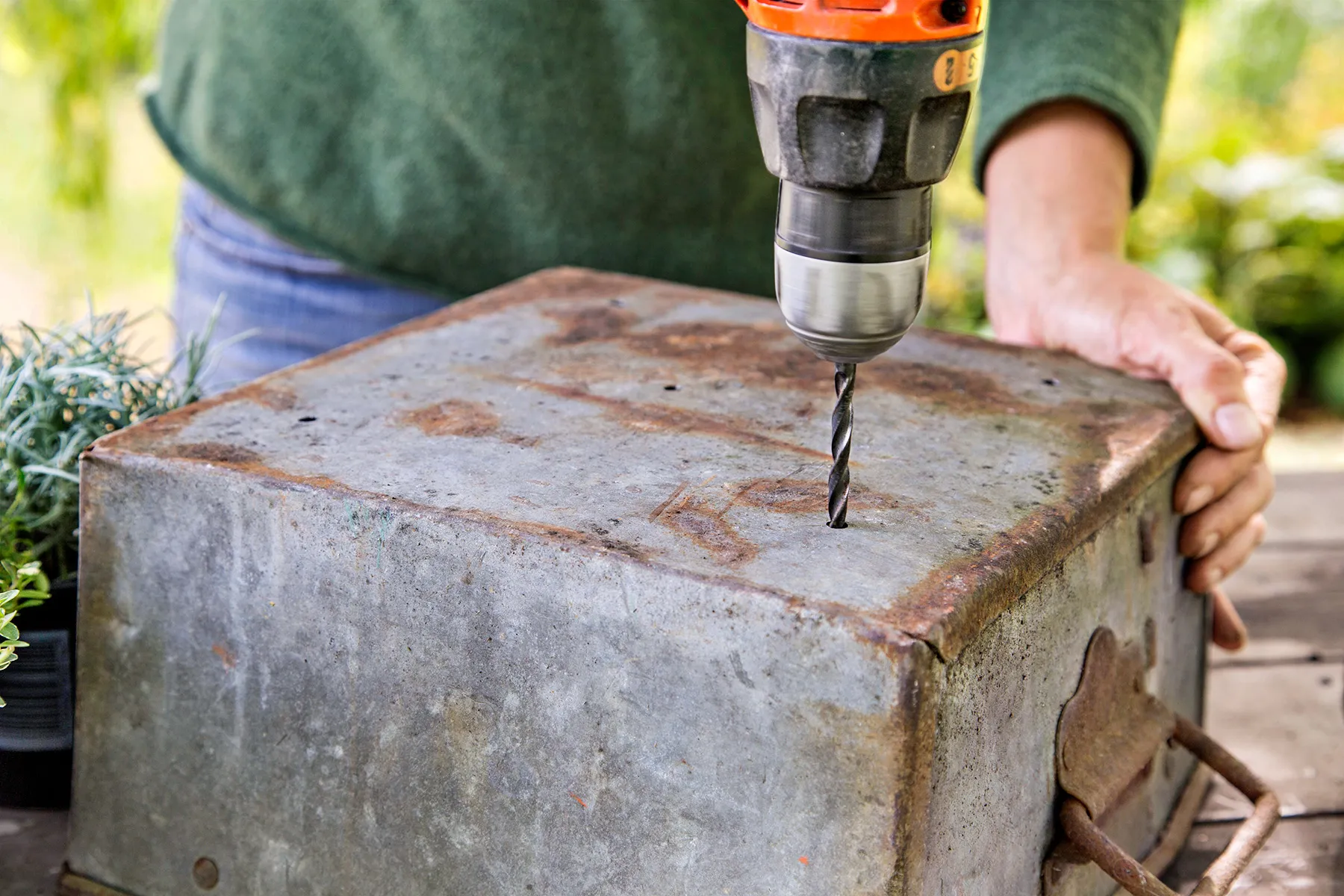
Good drainage is important for keeping your plants healthy. Without it, water can build up and cause root rot. The number of holes you’ll need depends on the size of your wheelbarrow. A good rule of thumb is to drill one hole every 4–6 inches across the bottom surface. Here’s how to create drainage holes in your wheelbarrow:
- Clean the wheelbarrow and remove any dirt or rust.
- Mark the spots where you’ll drill holes and space them evenly across the bottom.
- Use a drill with a bit that works best for the material of your wheelbarrow (metal or wood).
- Drill holes approximately 1/2 inch in diameter. Make sure they’re large enough for excess water to drain.
- Sand the edges of the holes to prevent sharp pieces from damaging your plants’ roots.
Step 2: Add Potting Soil
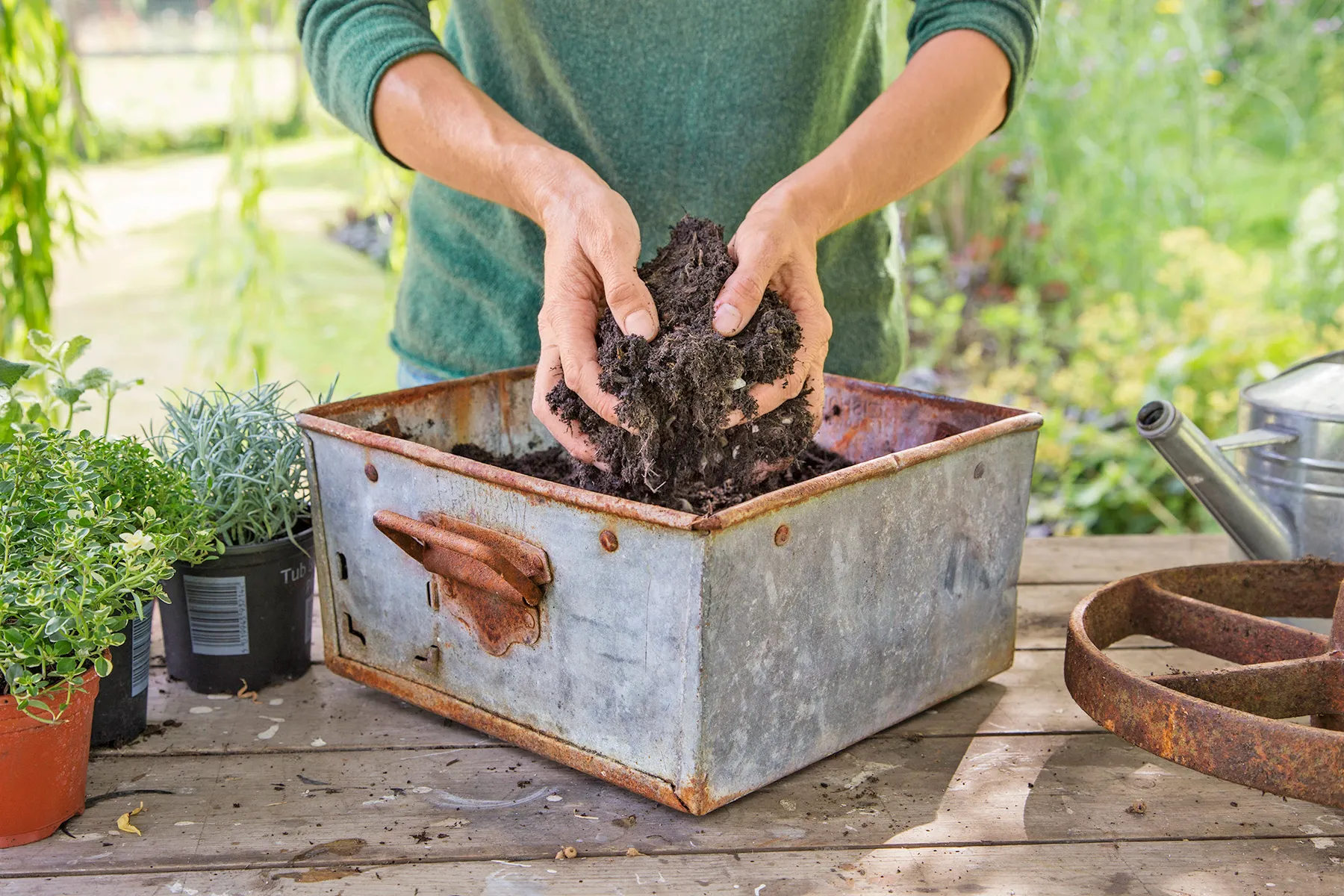
A good quality potting mix will give your plants the nutrients they need and help with drainage. Remember to leave some space at the top of the wheelbarrow for your plants and a layer of mulch. You’ll want about 1–2 inches below the rim of the wheelbarrow. Getting the soil right sets the stage for your plants to thrive and create a lush accent piece in your backyard.
When adding soil to your wheelbarrow planter, follow these steps:
- Add a layer of gravel or small rocks at the bottom of the wheelbarrow. This will further improve drainage and prevent soil from clogging the holes you drilled.
- Fill the wheelbarrow about two-thirds full with a well-draining potting mix. Look for soils made for container gardening.
- If you’re planting a variety of plants with different soil needs, use dividers to create sections within the wheelbarrow.
- Gently pat down the soil to remove any air pockets, but avoid compacting it too much.
Step 3: Add a Wheel
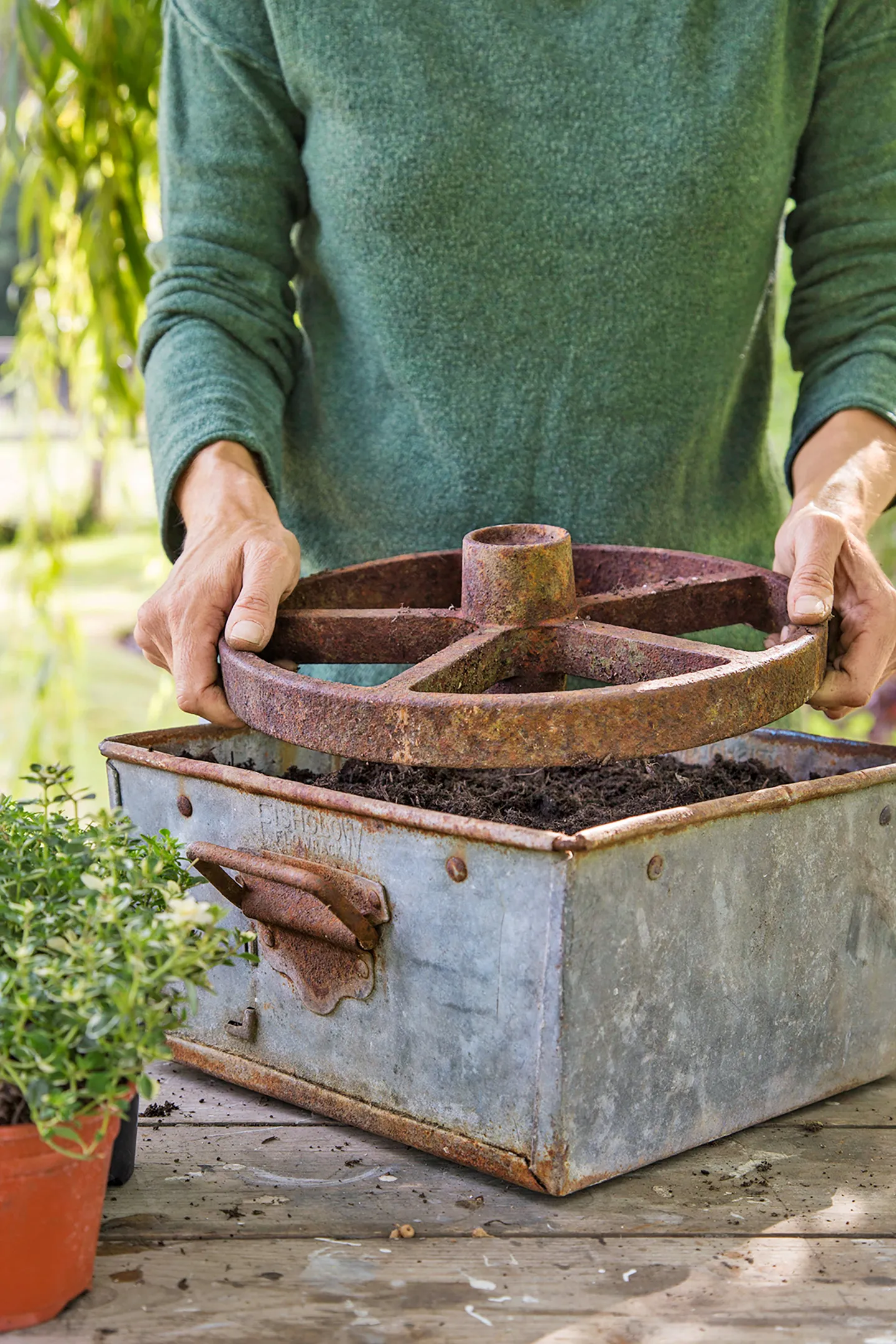
A vintage wheel can give your planter a rustic, country feel while doubling as a specialized tool. The metal spokes of the wheel create natural sections for planting, allowing you to separate different types of plants without restricting their root growth. Here’s how to install a wheel in your wheelbarrow:
- Choose a wheel that matches the style and size of your wheelbarrow. Alternatively, you can remove the wheel from your wheelbarrow to use in the center.
- Clean the wheel and remove any rust or dirt.
- Lay the wheel flat in the center of the wheelbarrow, pressing it gently into the soil.
- Partially bury it in the soil to make sure it’s fully secure.
- Fill in any gaps around the wheel with additional potting soil.
The wheel’s spokes create the perfect pockets for planting herbs or small flowers, adding depth to your arrangement and allowing you to show off your creative talent.
Step 4: Plant Herbs
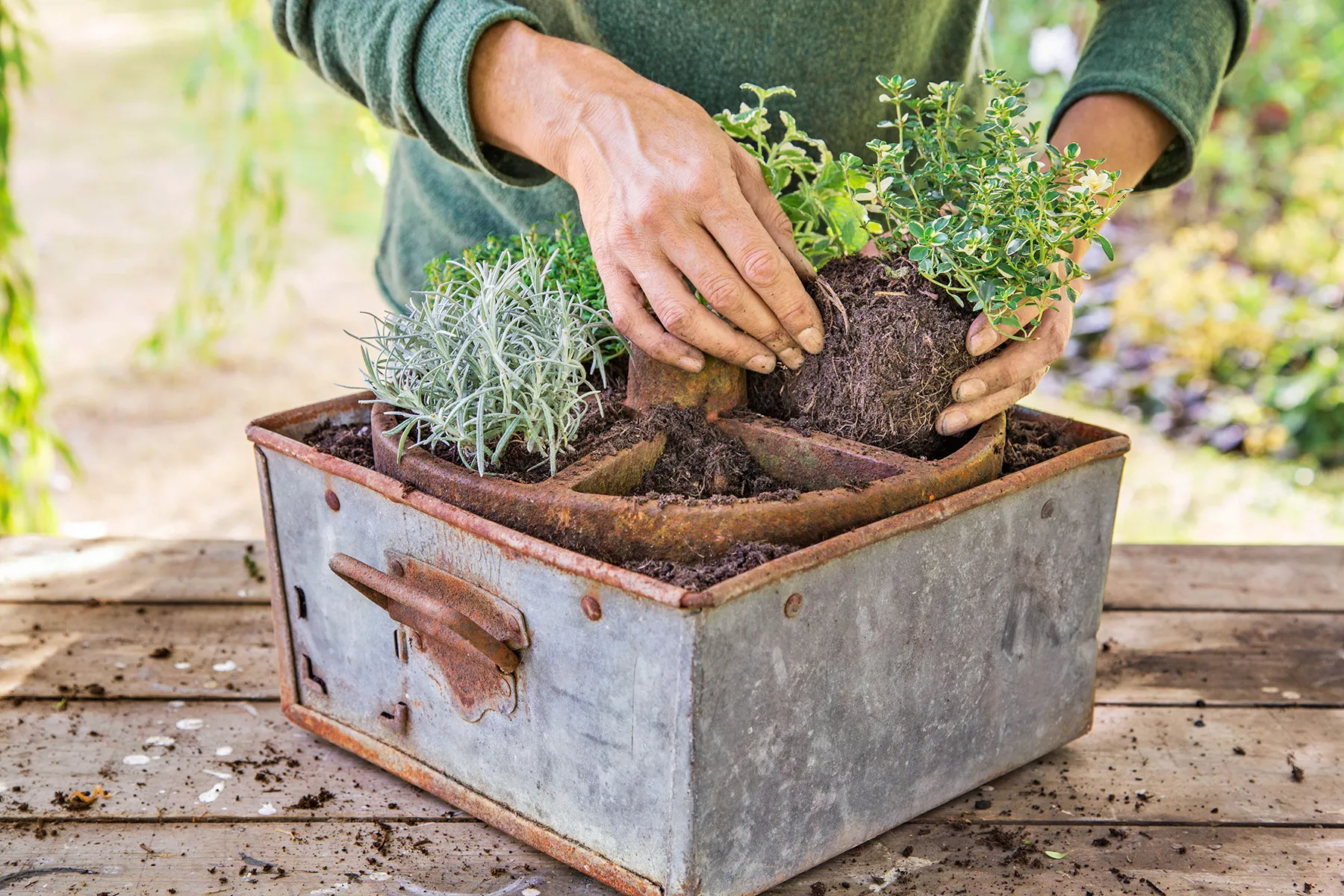
Herbs are great for wheelbarrow planters. They’re small, smell good, and can be used in cooking. You’ll have a mini herb garden right outside your door.
When planting herbs in your wheelbarrow, consider the following:
- Choose a variety of herbs with similar growing requirements and conditions. Popular options include basil, thyme, rosemary, oregano, and mint.
- Give your herbs enough space to grow. Research how big they’ll get when they’re full-grown and place them accordingly.
- Gently remove each herb from its nursery pot and loosen the roots before planting. Shake out any excess soil.
- Plant at the same depth as they were in their original containers, firming the soil around each plant.
Step 5: Mulch With Pea Gravel
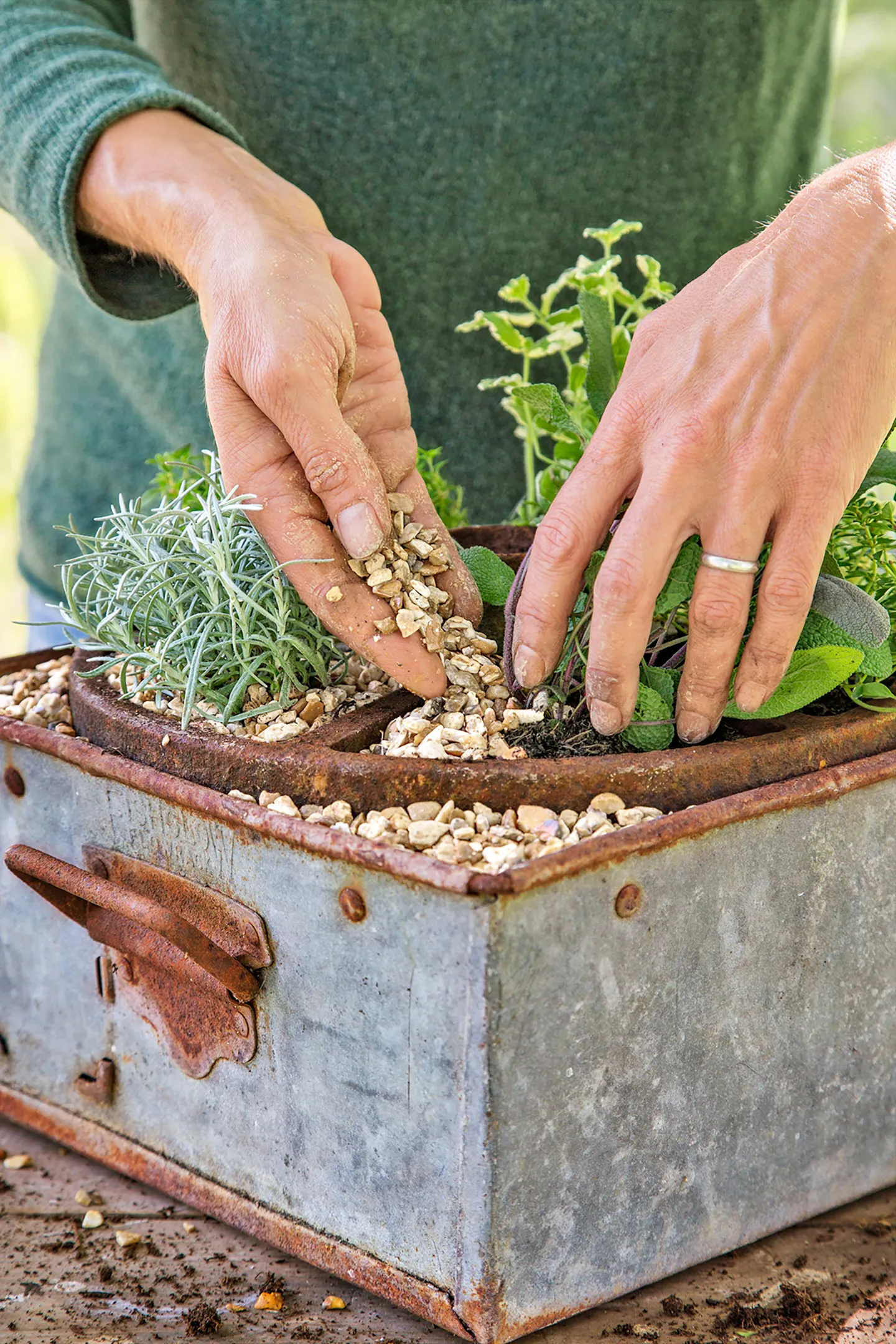
Mulching your wheelbarrow planter with pea gravel helps suppress weeds, retain moisture, and regulate soil temperature throughout the seasons while keeping your greenery looking neat. To mulch your wheelbarrow planter with pea gravel:
- Spread a 1–2 inch layer of pea gravel evenly across the soil surface, leaving a small gap around the base of each plant.
- Use your hands or a small garden tool to smooth out the gravel layer.
- Be careful not to bury low-growing plants or herb leaves under the gravel.
How To Choose Herbs for Your Garden
Walking into your local garden center, you’ll notice you have quite a few options for different herbs. Here are some tips to help you select the best herbs for your new container garden:
- Climate: Choose herbs that thrive in your specific climate zone. Mediterranean herbs like rosemary, thyme, and oregano prefer hot, sunny conditions, while herbs like mint, parsley, and chives can tolerate partial shade and cooler temperatures.
- Growing habits: While they may be small in their nursery pots now, you’ll want to consider the mature size and growth habits of the herbs you pick. Compact herbs such as basil, cilantro, and chives are ideal for smaller containers, while sprawling herbs like mint and oregano may need larger pots or regular trimming to manage their growth.
- Culinary preferences: Select herbs that you frequently use in your cooking, such as basil for Italian dishes, cilantro for Mexican cuisine, or thyme for roasting. This will make your garden both beautiful and functional, providing fresh herbs for your favorite recipes.
Take Care of Your Wheelbarrow Planter
We’ve put together some expert tips to help keep your wheelbarrow garden looking lush and healthy.
- Water regularly, checking the soil moisture daily during hot weather. Plants in containers will dry out faster than those in the ground.
- Fertilize your plants every 4-6 weeks with a balanced, water-soluble fertilizer. Check the requirements for each herb you plant, as some may not require as much attention.
- Prune herbs regularly to encourage bushier growth and prevent flowering. Pinch flowers when you notice them to prevent your plant from going to seed to prolong the life of your plant.
- Monitor for pests and diseases, addressing any issues promptly.
- Rotate the wheelbarrow occasionally to ensure all plants receive adequate sunlight.
